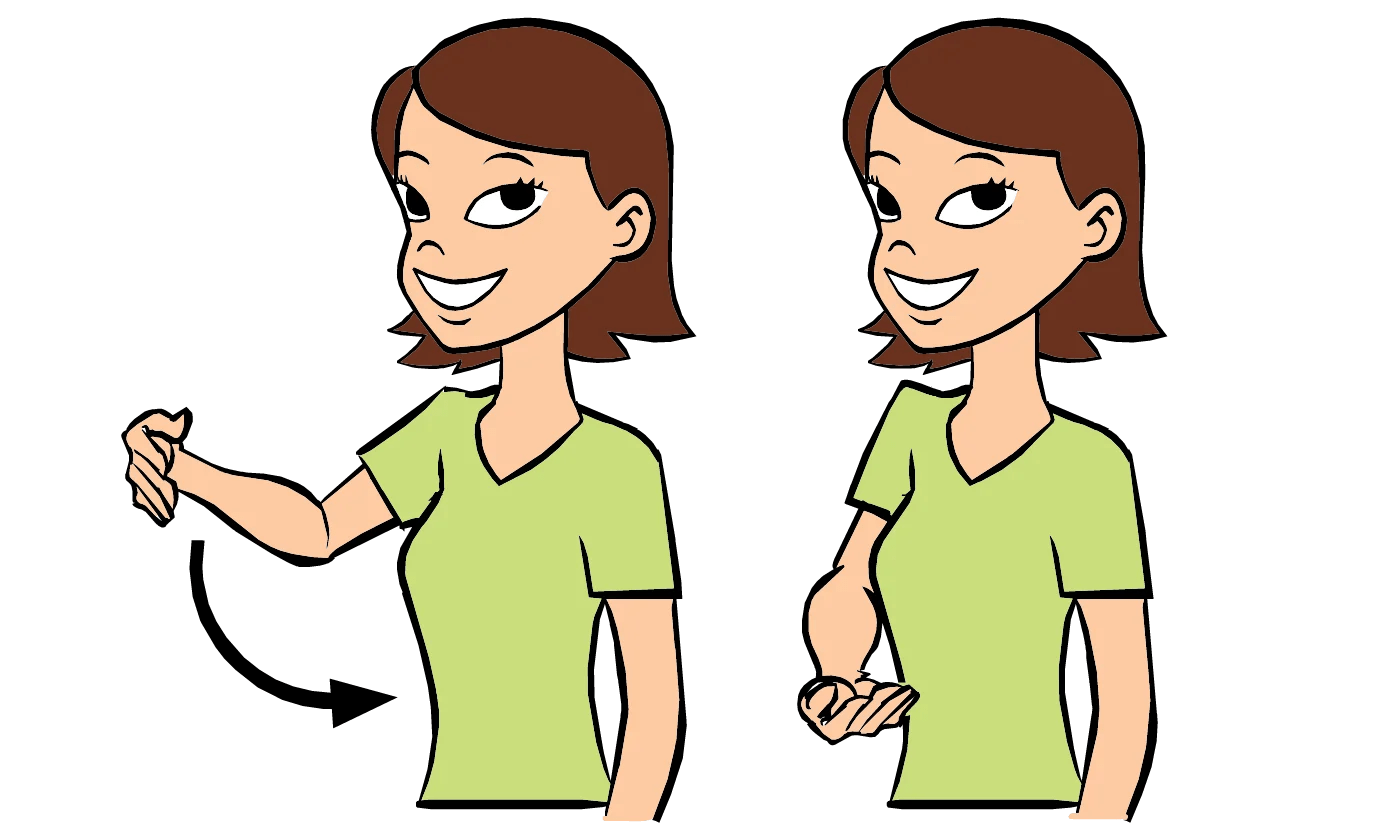American Sign Language (ASL) is a beautiful and expressive form of communication that embodies the culture and nuances of the Deaf community. Among the various signs that facilitate smooth conversation, the ASL sign for "you're welcome" holds particular significance, as it reflects politeness and acknowledgment in social interactions. Understanding this simple yet meaningful sign not only enriches one’s vocabulary in ASL but also fosters inclusivity and respect for Deaf culture.
Learning the ASL sign for "you're welcome" is essential for anyone who wishes to communicate effectively with Deaf individuals or engage in a more diverse linguistic environment. This sign serves as a polite response to someone expressing gratitude, demonstrating both understanding and appreciation. As we delve into the details of this sign, we will explore its significance, the correct hand movements, and how it fits into broader social exchanges within the Deaf community.
In this article, we will provide step-by-step instructions on how to perform the ASL sign for "you're welcome," along with insights into its cultural context. Whether you are a beginner looking to learn ASL or someone seeking to refine your skills, the following sections will guide you through this essential aspect of Deaf communication.
What is the ASL Sign for "You're Welcome"?
The ASL sign for "you're welcome" is a courteous gesture used in response to someone saying "thank you." It conveys a sense of friendliness and openness, reinforcing the bond between the signer and the recipient. The sign itself is simple and easy to learn, making it accessible for beginners.
How to Perform the ASL Sign for "You're Welcome"?
To perform the ASL sign for "you're welcome," follow these steps:
- Start with your dominant hand open and palm facing up.
- Place your hand near your chin or mouth.
- Move your hand outward and slightly away from your face, keeping your fingers together.
This motion symbolizes the act of offering or returning gratitude, making it an essential part of polite conversation in ASL.
Why is the ASL Sign for "You're Welcome" Important?
The ASL sign for "you're welcome" is more than just a response; it embodies the values of respect and acknowledgment within the Deaf community. Using this sign shows that you recognize and appreciate the efforts of others, fostering a positive and welcoming environment. Additionally, it encourages more meaningful interactions and helps bridge the gap between hearing and Deaf individuals.
When Should You Use the ASL Sign for "You're Welcome"?
There are several occasions when using the ASL sign for "you're welcome" is appropriate, including:
- When someone thanks you for assistance or a favor.
- In response to compliments about your skills or efforts.
- During social gatherings where gratitude is exchanged frequently.
Being mindful of when to use this sign enhances communication and demonstrates social awareness within various contexts.
Can You Use the ASL Sign for "You're Welcome" in Everyday Conversations?
Absolutely! The ASL sign for "you're welcome" can be seamlessly integrated into everyday conversations. It not only serves as a polite response but also enhances the overall exchange of kindness and respect. By incorporating this sign into your interactions, you contribute positively to the social dynamics around you.
How Does the ASL Sign for "You're Welcome" Compare to Other Responses?
While "you're welcome" is a common response to gratitude, there are other signs and phrases in ASL that serve similar purposes. For example, you might also use:
- "No problem": This is often signed by shaking your head while holding up an open hand.
- "It's nothing": This can be expressed by a dismissive wave of the hand.
Each of these responses carries its own connotation and is appropriate in different contexts. Understanding when to use each response will enhance your conversational skills in ASL.
Who Uses the ASL Sign for "You're Welcome"?
The ASL sign for "you're welcome" is used predominantly by members of the Deaf community and those who communicate with them. This includes interpreters, family members, educators, and friends of Deaf individuals. By learning and using this sign, hearing individuals can create a more inclusive environment and show respect for Deaf culture.
Are There Variations of the ASL Sign for "You're Welcome"?
While the basic ASL sign for "you're welcome" remains consistent, variations may exist based on regional dialects or personal preferences within the Deaf community. It's always best to observe and adapt to the signs used by those around you, as this fosters better understanding and communication.
Conclusion: Embracing the ASL Sign for "You're Welcome"
Learning the ASL sign for "you're welcome" is an important step towards embracing a more inclusive and respectful approach to communication. By mastering this simple yet powerful sign, you not only enhance your ASL vocabulary but also contribute to building meaningful connections with Deaf individuals. Remember, communication is a bridge that connects us all, and knowing how to respond graciously in any language, including ASL, enriches our social interactions.



